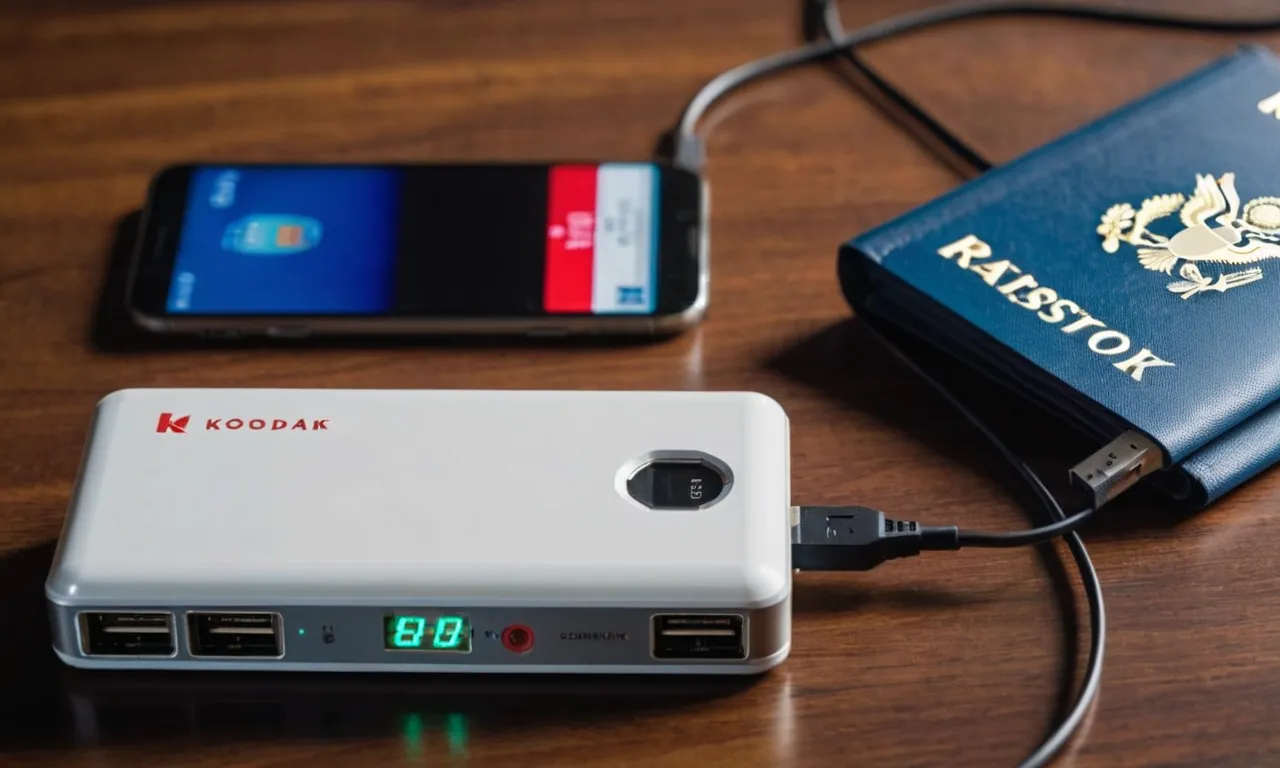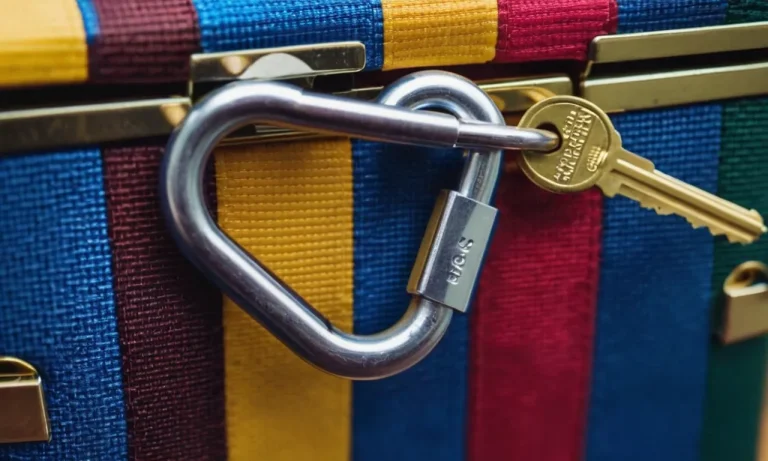Packing for a trip often feels like a whirlwind, so it’s no surprise important items sometimes get left behind in our luggage by accident.
One of the more problematic things to overlook is batteries, which can pose fire and safety issues if stored incorrectly in checked bags.
If you’re short on time, here is a quick answer:
Inform the airline immediately, be upfront about the mistake, cooperate fully with any instructions, and avoid trying to retrieve the bag yourself. The battery will likely need to be removed by trained staff.
Understanding Why Batteries Are Restricted
Batteries are restricted in checked luggage due to the potential risk of fires and explosions.
This is primarily because the lithium-ion batteries commonly found in electronic devices can generate heat and ignite if they come into contact with other flammable materials or if they are damaged during transportation.
Risk of fires and explosions
Lithium-ion batteries have a high energy density, which means they can store a significant amount of energy in a small, lightweight package.
While this is advantageous for portable devices, it also increases the risk of fires and explosions if the batteries are mishandled or damaged.
In recent years, there have been several incidents involving lithium-ion batteries catching fire or exploding, both in transportation and everyday use.
These incidents have raised concerns about the safety of transporting batteries in checked luggage, leading to stricter regulations and restrictions.
Regulations and restrictions by airlines
To mitigate the risk of fires and explosions, airlines and aviation authorities have implemented regulations and restrictions on carrying batteries in checked luggage.
The International Civil Aviation Organization (ICAO) and the International Air Transport Association (IATA) have issued guidelines and recommendations for the safe transportation of batteries.
Most airlines prohibit passengers from packing spare lithium-ion batteries in checked luggage.
Instead, they require these batteries to be carried in carry-on bags, where they can be easily monitored and accessed in case of emergencies.
Types of batteries more prone to issues
While lithium-ion batteries are the most commonly restricted type of battery, other types can also pose risks.
It’s important to note that the restrictions on batteries in checked luggage may vary depending on the airline and the specific country’s regulations.
Passengers are advised to check with their airline and review the guidelines provided by relevant aviation authorities to ensure compliance and safety.
What To Do If You Left a Battery in Checked Luggage
Inform airline staff immediately
If you accidentally left a battery in your checked luggage, it is important to inform airline staff as soon as possible.
Battery-related incidents can pose serious safety risks, and it is essential to take immediate action to prevent any potential hazards.
Approach a staff member at the airline counter or seek assistance from a security officer to notify them about the situation.
Remember, the sooner you inform them, the quicker they can address the issue and ensure the safety of everyone on board.
Cooperate fully with any safety protocols
Once you have informed the airline staff, it is vital to cooperate fully with any safety protocols that may be implemented.
Airlines have strict guidelines and procedures in place to handle situations involving batteries and other potentially hazardous materials.
They may need to isolate your bag, inspect it, or take additional precautions to ensure the safety of the aircraft and its passengers.
While this process may cause a slight delay, it is crucial to prioritize safety over convenience.
Do not try to retrieve your bag alone
While it can be tempting to try and retrieve your bag on your own, it is strongly advised against doing so. The presence of a battery in your checked luggage may require specialized handling or disposal methods.
Attempting to retrieve the bag without proper authorization or assistance could potentially put you and others at risk.
Instead, allow the airline staff or security personnel to handle the situation in a controlled and safe manner.
Remember, it is always better to err on the side of caution when it comes to safety.
Possible Outcomes and Consequences
When you accidentally leave a battery in your checked luggage, there are a few possible outcomes and consequences that you may face.
These can vary depending on the type and size of the battery, as well as the specific airline or airport security procedures.
It’s important to be aware of these potential outcomes so that you know what to expect and how to handle the situation.
Bag search and battery removal
One possible outcome is that your checked bag may be flagged during the security screening process. Transportation Security Administration (TSA) officials or airline staff may notice the presence of a battery and decide to search your bag.
In such cases, they will likely remove the battery from your luggage to ensure safety during the flight.
This is done to prevent any potential risks associated with batteries, such as overheating or short-circuiting.
Pro tip: To avoid this situation, always remember to remove batteries from electronic devices and pack them separately in your carry-on bag.
It’s also a good idea to double-check your luggage before heading to the airport to ensure you haven’t left any batteries behind.
Questioning by TSA or airlines
If your bag is flagged due to the presence of a battery, you may be required to answer questions from TSA officials or airline staff.
They may want to know why the battery was in your checked luggage and whether you were aware of the restriction on carrying batteries in checked bags.
It’s important to answer their questions honestly and politely to avoid any further complications. Remember, TSA and airline staff are simply doing their job to ensure the safety of all passengers.
Checked bag delays or restrictions
In some cases, the discovery of a battery in your checked luggage may result in delays or restrictions on your bag.
TSA or airline staff may need to take additional security measures, such as conducting further inspections or running additional tests on your luggage.
This can lead to delays in retrieving your bag upon arrival at your destination.
Additionally, depending on the airline’s policy, they may impose restrictions on future checked bags or require you to remove the batteries from your luggage before allowing it to be checked.
Important: It’s always a good idea to familiarize yourself with the specific rules and regulations of the airline you are flying with.
Different airlines may have different policies regarding the transportation of batteries, and being aware of these rules can help you avoid any potential inconveniences.

Tips to Avoid Making This Mistake
Forgetting to remove a battery from your checked luggage can be a common mistake, but there are several tips you can follow to ensure it doesn’t happen to you.
By taking a few extra precautions, you can avoid potential safety issues and save yourself from the hassle of dealing with the situation.
Here are some tips to help you avoid making this mistake:
Use luggage tags or apps to track contents
One way to prevent leaving a battery in your checked luggage is to use luggage tags or apps that allow you to track the contents of your bags.
These tools can help you keep track of what items you have packed and remind you to remove any prohibited items, such as batteries, before you travel.
Some apps even provide notifications and reminders to ensure you don’t forget anything important.
Double check pockets and compartments
Before you pack your bags, it’s important to thoroughly check all the pockets and compartments.
It’s easy for small items like batteries to get overlooked, especially if they are tucked away in a hidden pocket.
Take the time to carefully inspect your luggage and make sure all pockets and compartments are empty before you start packing.
This simple step can save you from the hassle of having to deal with a prohibited item at the airport.
Store batteries properly for transport
When it comes to transporting batteries, it’s essential to follow the proper guidelines to ensure safety.
Always store batteries in their original packaging or use a battery case to prevent them from coming into contact with other objects that could cause a short circuit.
If you’re traveling with loose batteries, make sure to cover the terminals with tape to prevent accidental contact.
Additionally, it’s important to check the airline’s specific regulations regarding battery transportation, as some airlines have restrictions on the types and quantities of batteries that can be brought on board.
By following these tips, you can avoid the mistake of leaving a battery in your checked luggage and ensure a smooth and stress-free travel experience.
Remember to always double-check your bags, use tracking tools, and store batteries properly to stay in compliance with airline regulations.
Safe travels!
What to Do If Your Bag Reaches Destination
Oops! You accidentally left a battery in your checked luggage and now you’re wondering what to do next. Don’t worry, we’ve got you covered.
Here’s a step-by-step guide on what you should do if your bag reaches its destination with a battery inside.
Inform airline upon arrival
As soon as you realize that you’ve left a battery in your checked luggage, it’s important to inform the airline immediately upon arrival. Head over to the airline’s customer service desk and let them know about the situation.
Airlines have specific protocols in place for dealing with hazardous materials, including batteries, so it’s crucial to inform them as soon as possible.
Seek help finding and removing battery
Once you’ve informed the airline, they will assist you in finding and removing the battery from your bag.
Depending on the airline’s policies and procedures, they may have trained staff members who can safely handle and dispose of the battery.
It’s important to let the professionals handle this task to ensure the safety of yourself, other passengers, and the airline staff.
Examine bag for damage
After the battery has been safely removed from your bag, take a moment to examine your luggage for any potential damage. It’s possible that the battery could have leaked or caused other issues during the journey.
If you notice any damage, report it to the airline immediately so that they can address the situation accordingly.
Remember, it’s always best to double-check your bags before heading to the airport to ensure that you haven’t accidentally packed any prohibited items.
However, if you do find yourself in a situation where you’ve left a battery in your checked luggage, following these steps will help you navigate the process smoothly and ensure the safety of everyone involved.
Conclusion
Accidentally leaving a risky item like a battery in your checked luggage can cause complications, but being upfront and cooperative with airline staff is the best way forward.
Use it as a learning experience, and implement packing strategies to prevent this mistake again.






